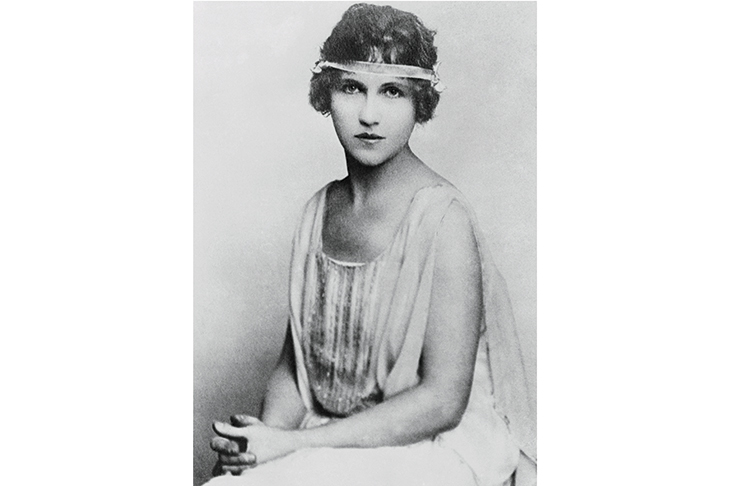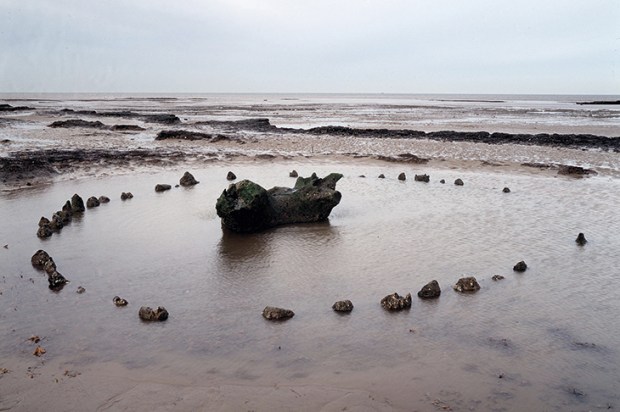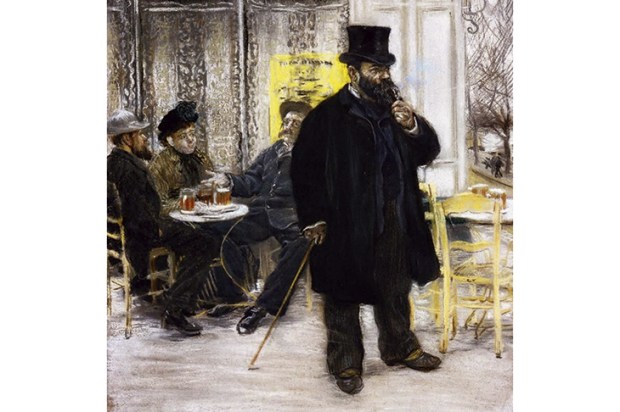No matter how exquisitely English —gobbets of blood amid the fireplace ornaments — murder annihilates meaning. Even when the motive is clear and strong, even when the progression to the fatal blow can be analysed step by step, all that is left amid the eviscerated lives of loved ones is an emptiness around the violence itself. In fiction, this void is filled: Agatha Christie understood very well about hatred, and her stories seethe with it. In 1935, as millions of her readers were devouring Murder on the Orient Express — a novel constructed around a biblical act of molten vengeance — the nation was suddenly mesmerised by a real-life shocker: a weird and savage killing in the genteel south-coast resort of Bournemouth.
The incongruous setting was a house called Villa Madeira, the apotheosis of interwar respectability; the victim, Francis Rattenbury, was an architect in his late sixties. He was in the sitting room after everyone else had apparently retired to bed; his skull was bashed in with a mallet.
Sean O’Connor’s meticulously researched account of the murder and trial, the lurid scandal and repercussive aftermath is superbly evocative and gripping. But this is not a whodunnit, nor even a why-dunnit. Instead, it’s a book riven with intelligent and compassionate ambiguity. The killer was an 18-year-old boy, the lover of the victim’s wife, Alma. But this is where rationality slips into elusive darkness; and O’Connor dives deep into the most extraordinary psychological mysteries, while also expertly evoking the songs and the escapism, the cars, shops, hotels and trains that filled the landscape of 1930s Britain.
Alma Rattenbury would have been a vividly compelling figure even without the shadow of murder. A brilliant pianist and talented songwriter, she was brought up in Canada at the turn of the century, became a mother, then a young widow in the first world war, and subsequently married Rattenbury — known as ‘Ratz’ — who was 30 years her senior. She drank, took drugs and lived expensively and vivaciously; but she was also warm and generous and compulsively romantic. After some calamitous investments and hostile local politics in Canada, Ratz, Alma and her two sons (the elder from a previous marriage) moved to Britain. By that time, the marriage was affectionate but sexless, with the couple occupying separate bedrooms.
The household in Bournemouth also consisted of a maidservant, Irene, who was devoted to her mistress; and later, a young live-in chauffeur, George Percy Stoner, who was even more devoted to her. This passion was not merely reciprocated: Alma seemed overwhelmed by her feelings for him. Every night, with seemingly no fears about discretion, the boy, known by all as Stoner, entered Mrs Rattenbury’s bedroom by prior arrangement and slept with her. If Ratz knew, he never mentioned it.
Then one night came the explosion of violence — Ratz sitting in his armchair as Stoner crept in through the French windows with a heavy mallet. Alma was in bed, unsuspecting. Immediately after the assault, Stoner went upstairs, got into bed with her and, clearly in shock, almost instantly told her what he had done — motivated apparently by a spasm of confused jealousy. What followed was an extraordinary double murder trial, in which both Stoner and Alma faced the prospect of the noose. The twist-filled story inspired Terence Rattigan’s Cause Célèbre, and later found a perverse echo in Joe Orton’s Entertaining Mr Sloane.
This is a narrative that builds with the intensity of an approaching thunderstorm: Alma’s passions seemingly in plain sight and yet fundamentally unquantifiable — an attractive woman condemned by society, and yet also a source of addictive fascination to those professing shock. Then there is Stoner, the handsome boy seen by the public as an emblem of the lost generation of boys from the first world war — a killer whom newspaper readers seemed desperate to redeem.
The horror of that night is powerfully conveyed— the blood, Alma drinking manically while determined to shield her beloved from blame, the child upstairs who knows instinctively that something terrible has happened. But what follows after the trial is even more affecting: a Thomas Hardy tragedy thrown forward to
the 1930s.
In sensitive and affecting prose, O’Connor tells a story not just of murder but of the social and sexual limitations of the time, against which imaginative men and women could not help but push. From the salt winds on lonely marshes to the soot of London, from luxurious Kensington hotels to condemned cells, an entire world of oppression and defiant freedom is summoned up. The murder itself remains head-shakingly enigmatic, adding hugely to the power of the book. The old man slumped with his skull shattered suddenly has no significance to the wider world beyond his violent death, the meaning drained away like blood.
Got something to add? Join the discussion and comment below.
Get 10 issues for just $10
Subscribe to The Spectator Australia today for the next 10 magazine issues, plus full online access, for just $10.
You might disagree with half of it, but you’ll enjoy reading all of it. Try your first month for free, then just $2 a week for the remainder of your first year.














Comments
Don't miss out
Join the conversation with other Spectator Australia readers. Subscribe to leave a comment.
SUBSCRIBEAlready a subscriber? Log in